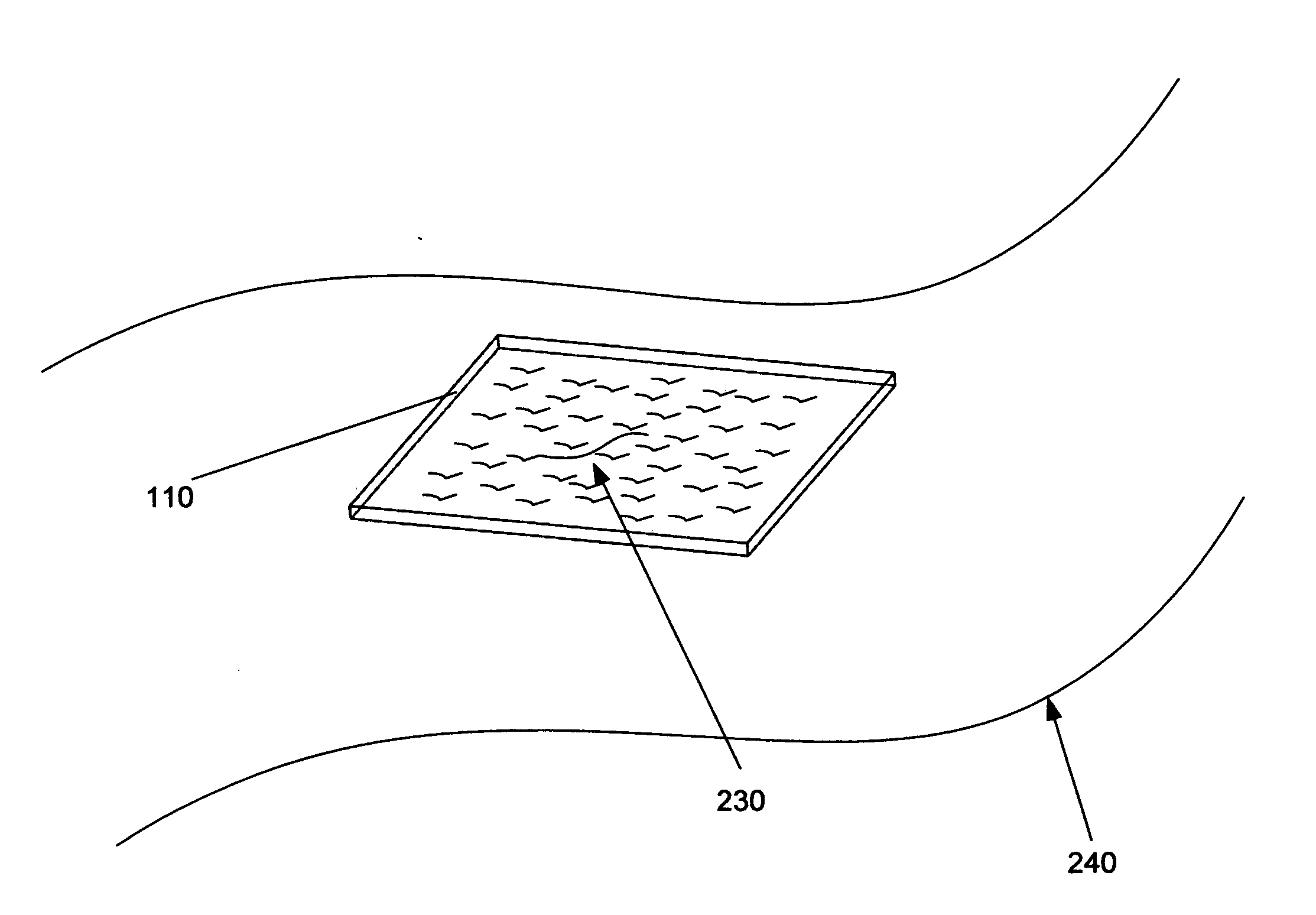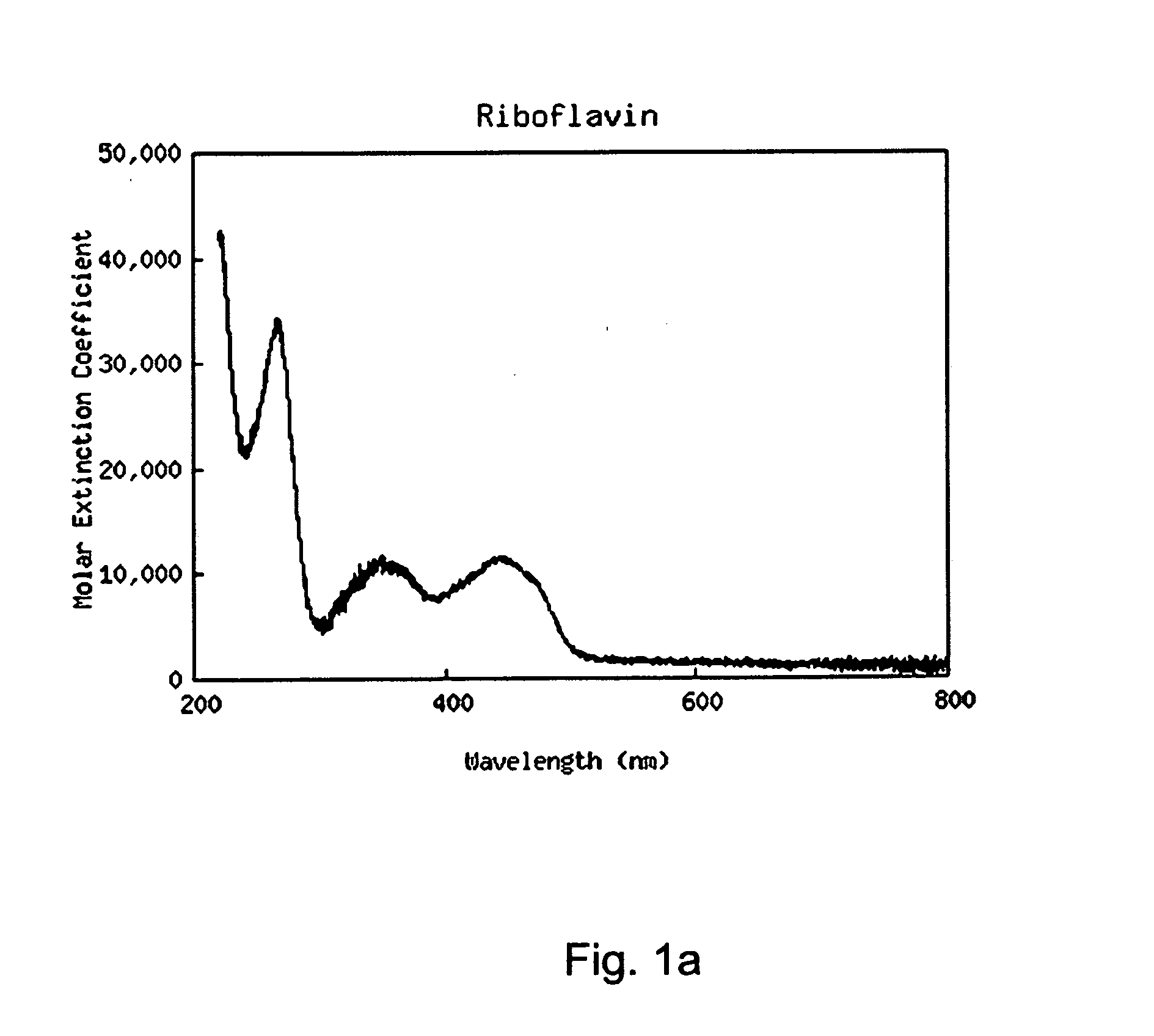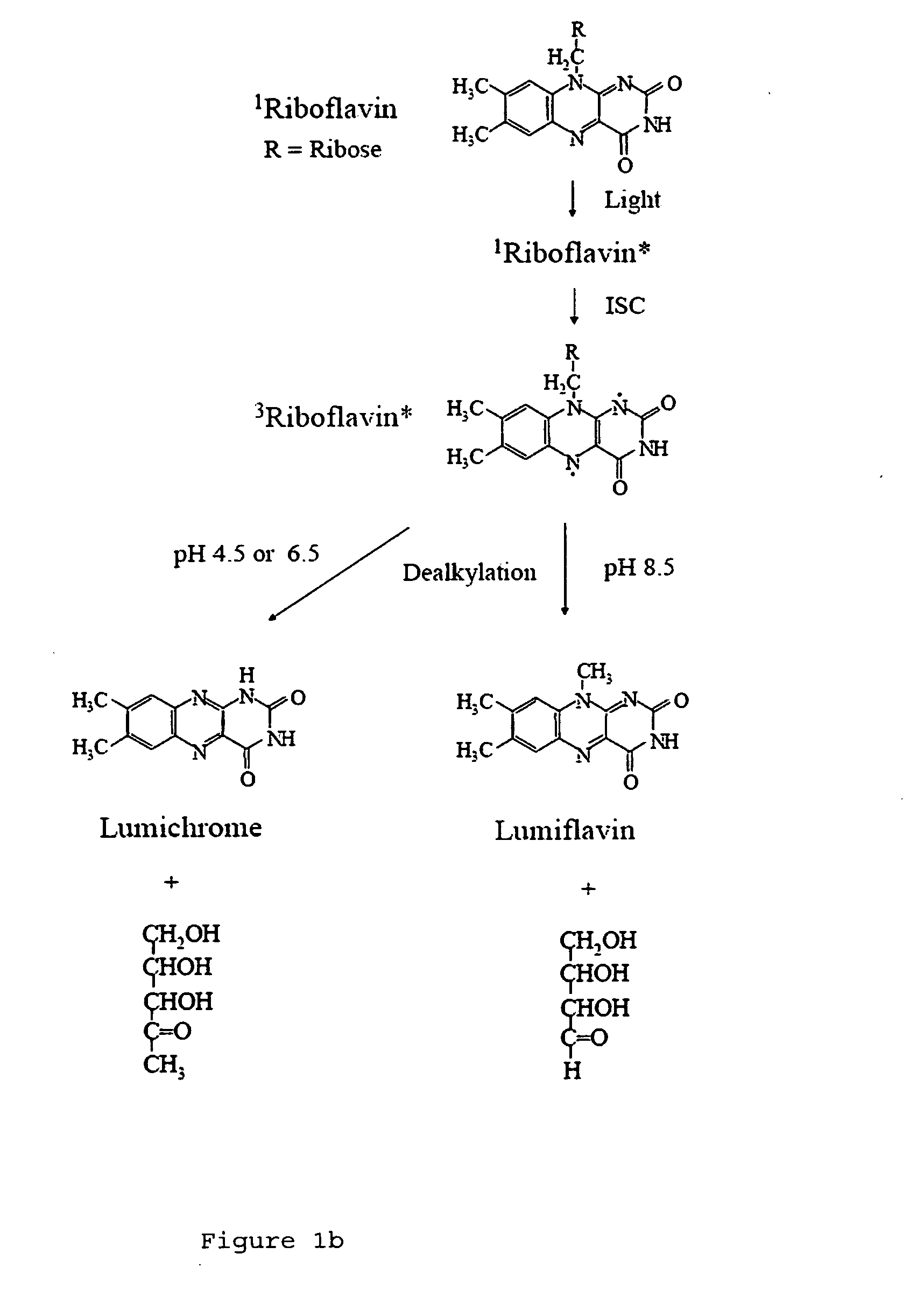Light Activated Composite Tissue Adhesives
a composite tissue and light-activated technology, applied in the field of light-activated composite tissue adhesives, can solve the problems of high level of surgeon skill, inability to achieve clinical acceptance of methods, strength, toxicity and resorbability of tissue, etc., to achieve the effect of enhancing the solubility of chromophore, preventing chromophore, and increasing the solubility of collagen layer
- Summary
- Abstract
- Description
- Claims
- Application Information
AI Technical Summary
Benefits of technology
Problems solved by technology
Method used
Image
Examples
Embodiment Construction
[0028]Reference will now be made in detail to exemplary embodiments of the disclosure, examples of which are illustrated in the accompanying drawings. Wherever possible, the same reference numbers will be used throughout the drawings to refer to the same or like parts.
[0029]A layer of collagen that incorporates a photosensitive chromophore such as riboflavin, lumiflavin, lumichrome or a combination of thereof, for example, may be applied directly to a surgical incision or a trauma wound, for example. While the riboflavin diffuses to the affected area, the collagen layer is exposed to light (e.g., light having a wavelength between 360-375 nm or alternatively 440-480 nm) with power densities in the range 0.1 W / cm2 to 2 W / cm2. In other examples, the collagen layer may instead contain lumichrome or lumiflavin. A method of preparing a composition consistent with the present disclosure will next be described.
[0030]The collagen layer may be made from a collagen which has been extracted, pu...
PUM
| Property | Measurement | Unit |
|---|---|---|
| concentration | aaaaa | aaaaa |
| concentration | aaaaa | aaaaa |
| wavelength | aaaaa | aaaaa |
Abstract
Description
Claims
Application Information
 Login to View More
Login to View More - R&D
- Intellectual Property
- Life Sciences
- Materials
- Tech Scout
- Unparalleled Data Quality
- Higher Quality Content
- 60% Fewer Hallucinations
Browse by: Latest US Patents, China's latest patents, Technical Efficacy Thesaurus, Application Domain, Technology Topic, Popular Technical Reports.
© 2025 PatSnap. All rights reserved.Legal|Privacy policy|Modern Slavery Act Transparency Statement|Sitemap|About US| Contact US: help@patsnap.com



